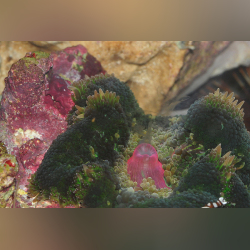Info
Similar Species: Very distinctive although superficially like Zoopilus echinatus.
Synonymised names:
Lithactinia galeriformis (Dana, 1846) (synonymy)
Lithactinia novaehiberniae Lesson, 1831 (original combination, basionym)
Lithactinia pileiformis (Dana, 1846) (synonymy)
Polyphyllia galeriformis Dana, 1846 (junior synonym)
Polyphyllia pileiformis Dana, 1846 (junior synonym)
Polyphyllia substellata Blainville, 1830 (junior synonym)







 Dr. John Edward Norwood "Charlie" Veron, Australien
Dr. John Edward Norwood "Charlie" Veron, Australien










